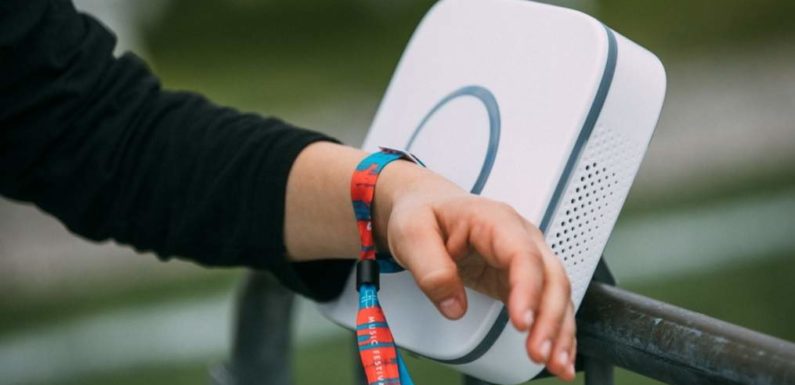
With the rapid development of RFID technology and the improvement of people’s living standards, Our life begins to be smarter.we are exposing to many devices that read information,For example, many apartment is using a comprehensive security access control system. The use of traditional IC cards and RFID cards has become the focus of debate. Non-contact IC cards are the most commonly used management methods for access control systems.But In protecting the safety of residents, and high-frequency RFID perfectly solves this problem.
So what are the differences and connections between them? First of all, we often use the most extensive category is IC cards, and often it is see that non-contact IC cards. Applications such as public transportation, subway, canteen, and near-field payment are widely used.
Some countries and regions of IC cards are also called smart cards, micro circuit cards or microchip cards. It is a form of a microelectronic chip into a card. Therefore, the contactless IC card is also called a radio frequency card or an electronic tag. The IC card refers to an integrated circuit card. The general bus card is a type of IC card, and is also applied to access control management, identity verification, and electronic wallet.
The IC card is different from the magnetic card, so the degaussing of the IC card is purely pseudo-science! In short, the working principle is that the card reader emits an electromagnetic wave that changes according to the information. The induction coil inside the card converts this electromagnetic wave into an induced current for transmitting information and driving the chip to work..
People can understand IC card as a physical form of RFID technology, because RFID, also known as RFID, RFID, is a communication technology that can identify specific targets and read and write related data through radio signals without Establish a mechanical or optical contact between the identification system and a specific target. Commonly used are low frequency, high frequency, ultra high frequency, passive and other technologies. RFID readers are also mobile and fixed. At present, RFID technology is widely used, such as: library, access control system, food safety traceability. Our commonly used IC cards are high frequency RFID cards or labels.
How does the Ic card work?
The basic principle of the IC card work is: the RF reader sends a set of electromagnetic waves of fixed frequency to the IC card. The card has an LC series resonant circuit whose frequency is the same as the frequency emitted by the reader, so that under the excitation of the electromagnetic wave, LC The resonant circuit resonates so that there is a charge in the capacitor; at the other end of the capacitor, a one-way electronic pump is connected to store the charge in the capacitor to another capacitor, when the accumulated charge reaches 2V. This capacitor can be used as a power supply to supply operating voltages to other circuits, to transmit data from the card or to accept data from the reader.
How RFID technology works

The basic working principle of RFID technology is not complicated: after the tag enters the magnetic field, it receives the RF signal from the reader, and sends the product information (passive tag, passive tag or passive tag) stored in the chip by the energy obtained by the induced current. Or the tag actively sends a signal of a certain frequency (Active Tag, active tag or active tag), the reader reads the information and decodes it, and sends it to the central information system for data processing.
A complete RFID system consists of a reader (Reader) and an electronic tag (TAG), also called a transponder and an application software system. The working principle is that the Reader transmits a specific frequency. The radio wave energy is sent to the Transponder to drive the Transponder circuit to send the internal data. At this time, the Reader receives the interpretation data in sequence and sends it to the application for corresponding processing.
In terms of communication and energy sensing between the RFID card reader and the electronic tag, it can be roughly divided into two types: Inductive Coupling and Backscatter Coupling. Generally, the low-frequency RFID mostly adopts the first type, and the higher frequency mostly adopts the second method.
The reader can be a read or read/write device depending on the structure and technology used, and is an RFID system information control and processing center. The reader usually consists of a coupling module, a transceiver module, a control module, and an interface unit. The half-duplex communication is generally used for information exchange between the reader and the transponder, while the reader provides energy and timing by coupling to the passive transponder.
In practical applications, management functions such as collection, processing, and remote transmission of object identification information can be further implemented through Ethernet or WLAN. The transponder is the information carrier of the RFID system. Currently, the transponder is mostly composed of a coupling element (coil, microstrip antenna, etc.) and a microchip.
All in all, the price of the IC card is slightly higher, the data storage is large, and the data security is good, but since its contacts are exposed, it may be damaged by static electricity or human factors. The biggest advantage of RFID radio frequency card is that it is non-contact, so it does not need manual intervention when it is completed. It is suitable for automation and is not easy to damage. It can recognize high-speed moving objects and identify multiple RF cards by colleagues.
The operation is quick and convenient. Short-range RF cards are not afraid of oil, dust, and other harsh environments, such as tracking objects on the assembly line of a factory. Long-range RF products are mostly used for transportation, and the recognition distance can reach several tens of meters, such as automatic charging or identification of vehicle identity.
If you are looking for a rfid cards supplier, please visit: https://www.starnfc.com/product-category/rfid-card/

